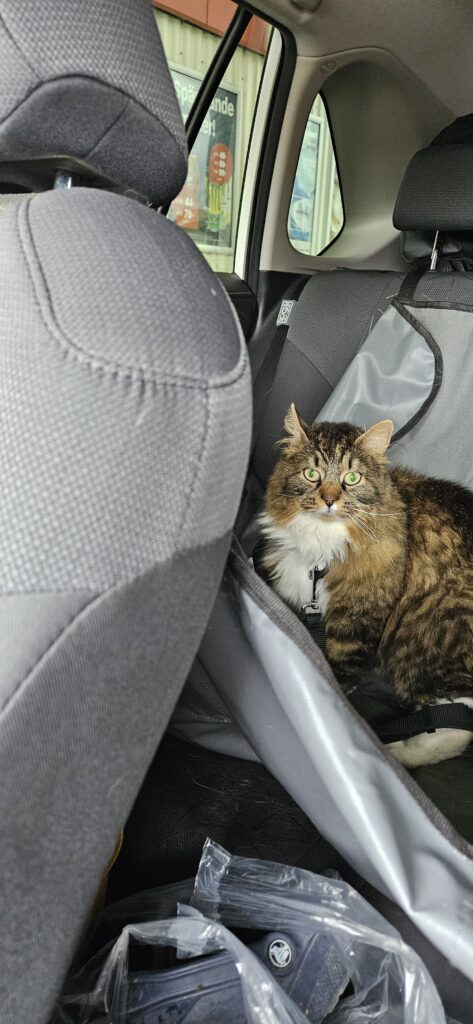The Norwegian Forest Cat, often affectionately called “Wegie” by enthusiasts, is a breed steeped in mythology, history, and stunning natural beauty. Originating from the forests of Norway, this cat has been a beloved companion for centuries and is known for its robust build, dense fur, and captivating personality. In this article, we will explore the breed’s origins, characteristics, care requirements, and its role in folklore and modern households.
Origins and History
The Norwegian Forest Cat has deep historical roots, dating back hundreds, possibly thousands of years. Though there is no concrete evidence of its exact beginnings, theories suggest that it is a natural breed that evolved to survive Norway’s harsh climate.
Mythological Connections
Norse mythology speaks of large, long-haired cats pulling the chariot of the goddess Freyja. While these cats were likely mythical, they bear a striking resemblance to the Norwegian Forest Cat, leading some to believe they served as inspiration.
Evolution and Recognition
Through centuries of natural selection, Wegies developed thick, water-resistant coats and sturdy bodies suited for their rugged surroundings. While they were long admired by Norwegians, formal recognition of the breed came much later. In the 1930s, efforts began to establish official breed standards, but World War II delayed progress. It was not until the 1970s that the Norwegian Forest Cat gained international recognition, thanks to dedicated breeders in Scandinavia.
Physical Characteristics
Size and Build
The Norwegian Forest Cat is a large breed, with males weighing between 5-8 kg (11-17 lbs) and females slightly smaller. They have strong, muscular frames built for climbing and hunting.
Fur and Coat
Perhaps the most distinguishing feature of this breed is its luxurious coat. Their double-layered fur consists of a dense, water-resistant undercoat and a longer, glossy topcoat that repels moisture. Their fur varies in length, becoming particularly thick around their neck, resembling a lion’s mane.
Colors and Patterns
Norwegian Forest Cats come in a wide variety of colors and patterns, including:
- White
- Black
- Blue
- Red
- Cream
- Tabby
- Tortoiseshell
Eyes and Expression
Their almond-shaped eyes are large and expressive, typically coming in shades of green, gold, or copper, enhancing their mystic charm.
Personality and Behavior
The Norwegian Forest Cat is known for its affectionate yet independent nature. Unlike lap cats that demand constant attention, Wegies enjoy companionship on their own terms.
Temperament
- Gentle and Friendly: They are sociable and get along well with people and other animals.
- Playful and Energetic: Even as adults, they retain a playful spirit, often engaging in climbing activities.
- Independent Thinkers: Norwegian Forest Cats are smart and tend to be self-sufficient, making them great for individuals who appreciate a balance of affection and autonomy.
Caring for a Norwegian Forest Cat
Owning a Norwegian Forest Cat requires a commitment to proper care, ensuring their health and happiness.
Dietary Needs
Due to their large size and active lifestyle, Wegies require high-quality food rich in protein. Their diet should include:
- Lean meats (chicken, turkey, fish)
- High-protein kibble
- Occasional wet food for hydration
- Fresh water at all times
Grooming Requirements
Despite their thick coats, Norwegian Forest Cats do not require excessive grooming. However, regular brushing (2-3 times per week) helps reduce shedding and prevent matting, particularly during seasonal coat changes.
Exercise and Mental Stimulation
- Climbing Structures: Providing cat trees or wall-mounted shelves keeps them entertained.
- Interactive Play: Toys like feather wands or puzzle feeders engage their instincts.
- Outdoor Enclosures: Some owners create safe outdoor spaces where their Wegie can explore.
Health Considerations
While Norwegian Forest Cats are generally healthy, they can be predisposed to certain genetic conditions:
- Hypertrophic Cardiomyopathy (HCM): A common heart condition in cats.
- Hip Dysplasia: Less common but can affect movement.
- Glycogen Storage Disease Type IV: A rare inherited condition in some lines.
Regular veterinary check-ups help monitor their health and prevent issues.
The Norwegian Forest Cat in Folklore and Popular Culture
Legends and Folktales
Norwegian Forest Cats have appeared in Scandinavian myths and folktales, often depicted as mysterious and enchanted creatures capable of surviving in the harshest conditions.
Modern Popularity
In recent decades, the breed has gained worldwide recognition, often seen in books, films, and social media. Their regal appearance and warm nature make them beloved pets.
Is the Norwegian Forest Cat Right for You?
Before adopting a Norwegian Forest Cat, consider:
- Your Lifestyle: They need space and interactive play.
- Grooming Commitment: Regular brushing helps maintain their beautiful coats.
- Affection and Independence: They love companionship but are not overly clingy.
If you seek a beautiful, intelligent, and affectionate feline companion, the Norwegian Forest Cat may be a perfect choice.
With their mythical origins, striking appearance, and lovable nature, Norwegian Forest Cats continue to enchant cat lovers worldwide. Whether you admire their history or want a majestic feline companion, these forest dwellers offer both charm and loyalty.
